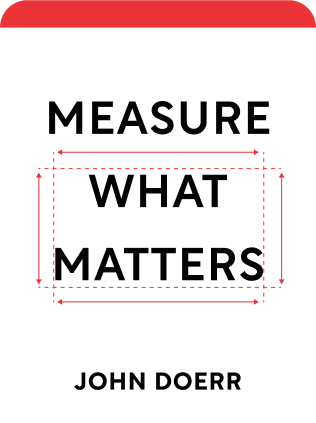

This article is an excerpt from the Shortform summary of "Measure What Matters" by John Doerr. Shortform has the world's best summaries of books you should be reading.
Like this article? Sign up for a free trial here .
What are the best ways to learn how to build a positive work culture? Can OKRs have an effect on your work culture?
OKRs are a big part in learning how to build a positive work culture. OKRs can help provide transparency and help employees feel as though they are part of the company.
Read more about how to build a positive work culture below.
How to Build a Positive Work Culture
Do you want to learn how to build a positive work culture? First, you need to consider why having a positive work culture is important. Then, you can move onto the steps of how to build a positive company culture.
What Is Culture and Why Is It Important?
Culture is a company’s beliefs and values, and the behaviors surrounding those beliefs and values. Most importantly, culture is a shared sense of purpose. Learning how to build a positive company culture means understanding why culture maters.
Research shows that companies with positive cultures outperform those without them. In one study, of the companies with healthy cultures, 96% received high scores for “systematic innovation” and 96% had “increased market share.”
This may be because employees understand their organization’s purpose and their purpose within the organization. When a company’s culture is cohesive and everyone knows its purpose, employees can make decisions quickly and reliably. This is an important part of knowing how to build a positive work culture.
How Do OKRs and CFRs Contribute to a Positive Culture?
In one study, researchers found that “high-motivation cultures” depend on two elements: catalysts and nourishers. These are important elements of knowing how to build a positive team culture.
Catalysts are elements of a company that support the work being done. These elements include goal setting, learning from failure, transparency, engaging in meaningful work, and freely sharing ideas. All of these elements are built into the OKR system.
Nourishers are elements of a company that support the interpersonal needs of employees. These elements include positive feedback, professional development, emotional support, psychological safety, and recognition. All of these elements are built into the CFR system.
In other words, OKRs are the catalysts of a positive workplace culture; CFRs are the nourishment that sustains it. You’ll need both in order to figure out how to build a positive team culture.
Example of Building a Positive Culture: ONE Campaign
OKRs can also help you establish a new culture when you discover the failings of your current one. Using OKRs can teach you how to build a positive work culture.
After rockstar Bono established the ONE Campaign, an activist coalition, he discovered a problem in their culture: They were working on Africa rather than with Africa.
One of the organization’s objectives was to ease poverty and the ravages of AIDS in Africa. Bono and his ONE Campaign team felt they knew what Africans needed, but they collaborated not with African governments, but with governments in North America and Europe, the continents with the most money and power.
One day at a board meeting, John Doerr asked, “Who’s the client here?” When the board told him that the clients were the poorest and most vulnerable people in the world, Doerr asked if these people had a “seat at the table,” both metaphorically and literally. They didn’t. Their culture and goals were tainted by a messiah complex.
Bono and the ONE team used OKRs to change the organization’s culture:
ONE Campaign OKR Example:
Objective: Use the perspectives of Africans to guide ONE’s work, align ONE’s work with the priorities of Africans, and use ONE’s political capital to lobby for policy changes in Africa.
Key Result #1: Hire three African-based employees by April, and two African board members by July.
Key Result #2: Create an African Advisory Board.
Key Result #3: Develop relationships with 10-15 African thinkers and leaders who consult on ONE’s work.
Key Result #4: Take four trips to Africa during the year.
Once they started hiring African board members, the team realized that some of their priorities needed to shift. One new board member pointed out that corruption, which cheated developing countries of a trillion dollars annually, was currently a bigger problem than HIV/AIDS. Consequently, ONE shifted its objectives to lobbying for policies that increased transparency in governments and businesses.
As we’ve seen, the OKR system is adaptable, and this adaptability can help you learn how to build a positive team culture. There’s no right or wrong way to use OKRs, and as your company grows, you’ll find the need to emphasize different elements of the system. For a new company, establishing priorities might be the game-changer you need. For more established companies, finding the right OKR cycle rhythm, be it quarterly or monthly, might be invaluable. Find the elements of the OKR system that will be most beneficial for your company today, and focus on those. Make the system your own.
For more resources on implementing the OKR system, and for how OKRs compare to and can complement other systems you may already have in place (such as the Entrepreneurial Operating System or the Objectives, Goals, Strategies, and Measures system), visit the What Matters website.
Now that you know how to build a positive work culture, you can begin investing in building out your OKRs, and creating that culture for yourself.

———End of Preview———
Like what you just read? Read the rest of the world's best summary of John Doerr's "Measure What Matters" at Shortform .
Here's what you'll find in our full Measure What Matters summary :
- How Google uses OKRs to rally 100,000 employees in the right direction
- How to avoid setting useless OKRs, and how to set great ones
- Key subtle behaviors your team must master to make OKRs work






